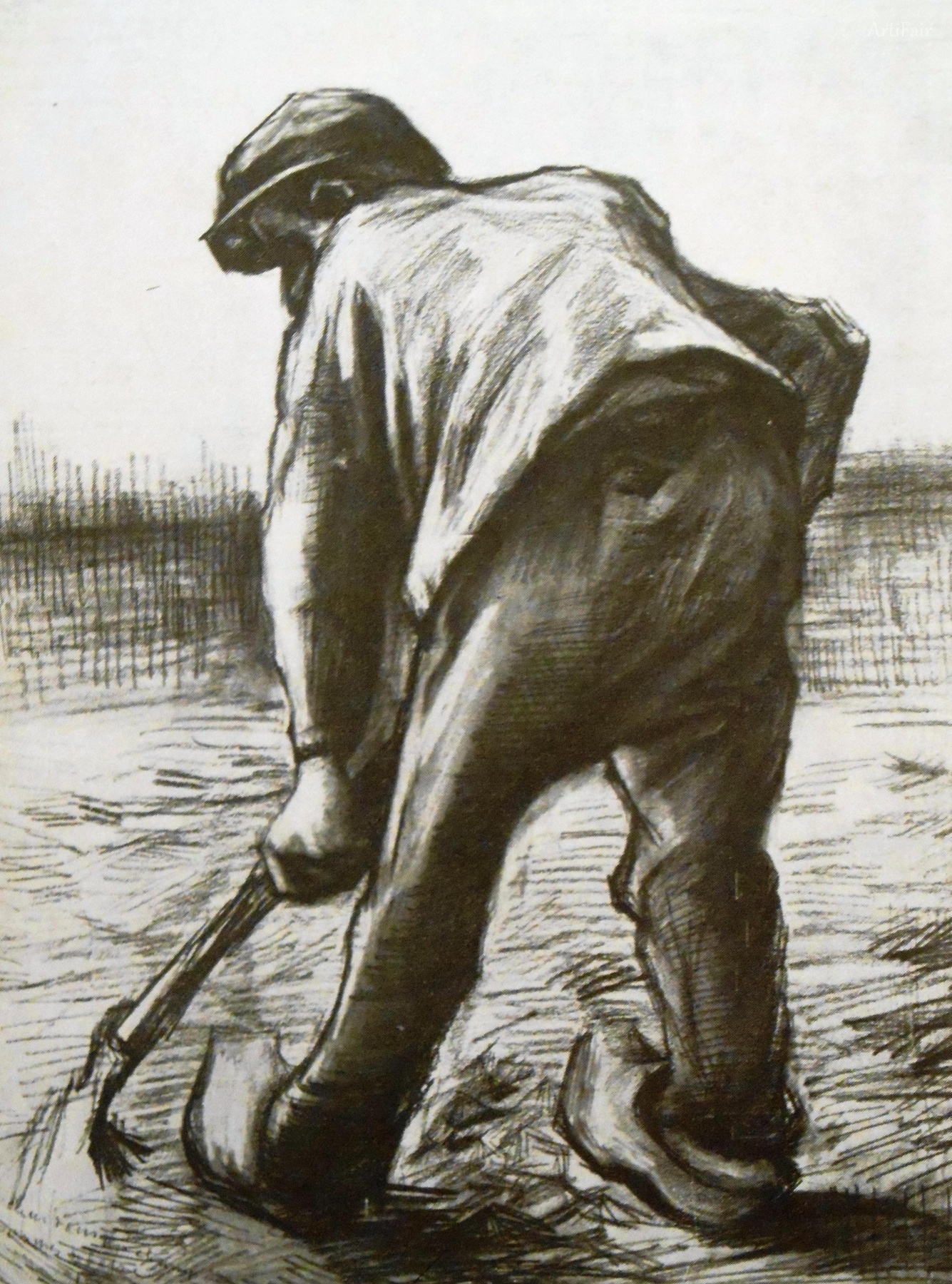
Art Appreciation
In this powerful depiction, a peasant laborer is captured in a moment of intense concentration, bent over with purpose as he digs into the earth. The perspective of viewing him from behind not only emphasizes his labor-intensive role but also evokes a sense of intimacy with the viewer, as if we are privy to his solitary struggle. The figure is clad in simple, rugged clothing – a testament to the harsh realities of rural life during the late 19th century. The casual, yet deliberate posture reflects the physicality of his work, while the solid stance suggests resilience in the face of adversity.
The artwork employs a monochromatic palette dominated by earthy tones, which reinforces the connection between the laborer and the soil he is tilling. The texture of the artwork, created through vigorous brushwork, lends a raw dynamism to the image, bringing out the contours of the figure and the undulations of the ground. There’s a poignant emotional undercurrent here; the viewer feels both the toil and the dignity in the labor, highlighting the essential but often overlooked contributions of peasants to society. In the context of Van Gogh's life, this piece embodies his empathy for the working class, and reflects the broader themes of suffering and endurance prevalent in his oeuvre during this period.